‘Flying Coke Machine’ Would Replace A-10, If We Had $: Air Force Chief Welsh
Posted on
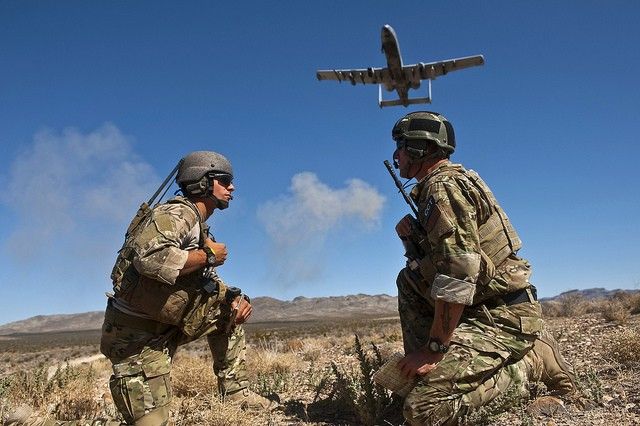
An A-10 “Warthog” flies low over two ground troops.
WASHINGTON: The Air Force wants to replace the aging but beloved A-10 “Warthog” with a robotic “flying coke machine” that loiters over the battlefield, dispensing firepower at the touch of a button, the outgoing Chief of Staff said this morning. (More on that concept below). Gen. Mark Welsh also wants a “sixth-generation fighter” that can defeat the most advanced air defenses. But he can’t afford either.
As the service downsizes, both dollars and skilled people are in too short supply, Welsh said. The force has its hands full fielding the new “fifth generation” F-35A Joint Strike Fighter and keeping all its aging fourth-generation (and older) planes in the air.
“I’d love to build a new CAS (Close Air Support) airplane right now while we still have the A-10,” said Welsh, a former A-10 pilot himself. (Many past Air Force leaders have been high-performance pilots who looked down on the slow, low-flying, but brutally efficient Warthog). “We don’t think this would take that long to do. We don’t think it’s that complicated of a design problem, (but) we don’t have the money to do it. We don’t have the people to keep flying the A-10 and go to the new airplane.”
“The A-10 has never been the issue, gang, ever. The issue is the Budget Control Act,” Welsh said this morning at a Defense Writers’ Group breakfast. “You can’t expect to keep using us the way we’ve been used for the last 50 years and continue to cut the size of the force.”
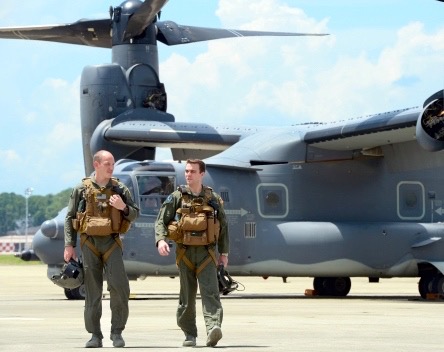
Air Force Special Operations Command pilots with their CV-22.
AWACS & AFSOC: A Stressed Force
The Air Force is sufficiently stressed that NATO allies will probably send their own flying radar/command aircraft to the Middle East to relieve American AWACS. The E-3 Sentry Airborne Warning and Control System (AWACS) is, incidentally, one of those aging aircraft, having first entered US service in 1977. It’s also a “high-demand low-density” asset for which commanders’ requests far outstrips the military’s supply. But AWACS is just one example of the Air Force’s overstretch.
“AWACS is not the most heavily stressed area of the air force, but they’re heavily stressed enough,” Welsh said. So who has it worst? “If you look at the last 15 years, it’s probably Air Force Special Operations Command,” he said. Unlike the rest of the Air Force, which gets to keep its distance from the enemy, AFSOC troops are parachute rescue personnel (PJs), air traffic controllers, and even meteorologists trained to airdrop into hostile territory and operate with frontline ground forces.
Nor has the pressure let up. “The problem isn’t that they’re worn out over the last year (of fighting Daesh), the problem is for 25 years they’ve been deployed and doing this work,” said Welsh. The First Gulf War of 1991 gave way to a decade of enforcing “no-fly zones” which into erupted into renewed war.
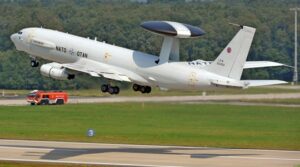
NATO AWACS aircraft
There is good news, however, Welsh said, pointing to improved morale in among both drone operators and ICBM silo crews.
The nuclear deterrent force is a Cold War elite that had fallen into neglect.
“This mission is the backbone of national security,” said Welsh. “We let them quit being proud of it.” Now the Air Force is improving training, reducing personnel turnover, and ending micromanagement, he said, and the result is a new enthusiasm from the troops he visits.
In the newer but equally strained field of drone operators — what the Air Force insists on calling “Remotely Piloted Aircraft pilots” — “dramatic changes have happened just this year,” Welsh said. Annual graduation of new pilots is rising from 180 a year — not enough to make up for 240 operators quitting annually — to about 334 this year and 384 the next. The influx of personnel is letting drone operators cut their work week from six days on, one off to a more sustainable five on, two off, Welsh said. The service is also seeking less manpower-intensive ways of controlling unmanned aircraft. Finally, the Air Force is also accelerating promotions for a community that often feels overshadowed by traditional “white scarf” pilots.
“The next big step would be standing up another RPA wing somewhere other than Creech (Air Force Base in Nevada),” said Welsh. “Again, to do that we need more manpower.”
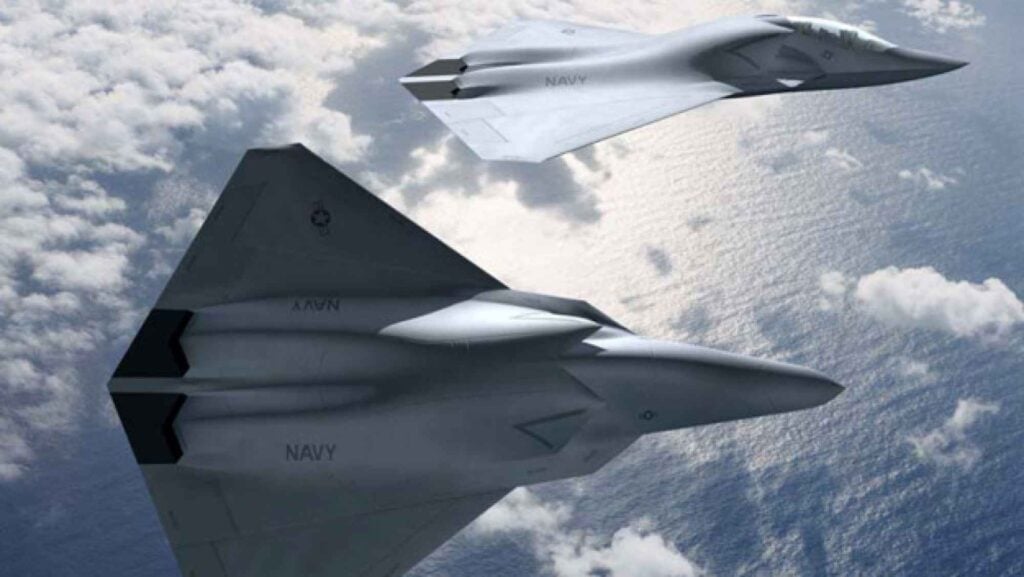
Boeing concepts for sixth generation fighters.
CAS Drones & 6th Gen Fighters
The tight supply of drone operators complicates creating a new close air support aircraft, because the new CAS platform would almost certainly be unmanned. While Welsh doesn’t say so specifically, the attributes he wants all suggest a drone rather than a manned aircraft: long endurance to loiter over the battlefield, instant response to ground commanders’ demands, low cost per flight hour — but not necessarily the agility and defenses to survive high-end threats.
“We’d need to optimize it for a low- to medium-threat environment, not a full threat environment,” Welsh said. The Air Force firmly believes that only stealth aircraft like the F-22 Raptor, the F-35 Lightning II, and the future B-21 Long-Range Strike Bomber can penetrate a multi-layered Russian or Chinese-style air defense, and even they won’t be loitering around in enemy missile range to provide anyone air cover.
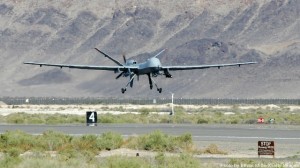
MQ-9 Reaper drone flies from Creech AFB
“Eventually, I think the right close air support replacement is something that’s overhead for ground forces all the time,” Welsh said. “It’s firepower on demand, it’s flying artillery…an orbiting weapons station.”
Or you could call it “a flying coke machine,” Welsh said, using a phrase used 10 years ago to describe combat drones. “Put your quarter in and you get whatever kind of firepower you want,” he said. “[E.g.] ‘it would be really nice to have area fire right now, and I mean right now.’ 911-ROCKETS.”
“I have a son who’s an infantry officer in the Marine Corps,” Welsh said. “As his dad, I’d like him to have that.” But there’s no money and no program to develop such an aircraft.
The Air Force is a little further along on a so-called sixth generation fighter to succeed the “fifth generation” F-35, having just concluded an “air superiority 2030” study. “The big thing I think they came up with,” said Welsh, “(is) we can’t spend 20 years trying to develop a new capability… the world is changing too fast.”
So instead of a decades-long mega-program like the F-35, “we have got to look at a series of smaller things” that materialize much faster, said Welsh. “If you want to do air superiority, it might not be…a sixth generation fighter. That may be part of it eventually, but there’s got to be something a lot quicker than that.”
“Just quit studying things all the time,” Welsh said to rueful laughter. “Let’s study it, get a plan find resources…and then move forward.”
Subscribe to our newsletter
Promotions, new products and sales. Directly to your inbox.
